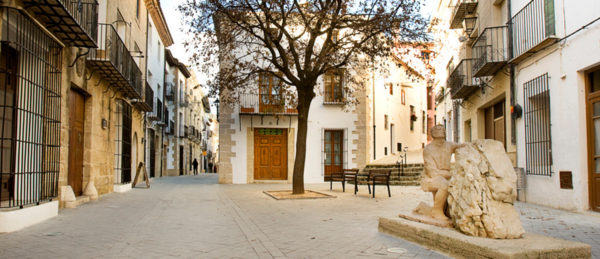Riberer Monument
A symbol of the migrant seasonal workers of the past, el Riberer is one of the most sentimental spots for locals
Over the course of centuries, many locals moved twice a year to the fields in the fields by the river Júcar, in the Valencia province. They went there on foot, dressed in simple, patched-up clothes, carrying a wicker basket on their shoulder with cold cuts, salt pork and bread kneaded by their wives or mothers and baked in wood ovens. Once they reached the shores of the Júcar River, they worked as seasonal farmhands to help sow and reap rice. This supplemented their income, as their rain-fed lands did not provide enough for them to make ends meet.
There was a large rock on the old road to Valencia from which the belfry of the old fortified church of Benissa could last be seen. It is there that the crews of Riberers or “blavets”, as they were known due to the blue smocks they wore, stopped and prayed a Salve for protection and as a farewell to their town. This is the image represented by the monument to the Riberers, which was paid for by popular subscription and inaugurated in the nineteen eighties.
The Riberers eventually became so numerous that they created their own festivities in the context of the feast of the Puríssima Xiqueta. Thus, on the Monday following the fourth Sunday of April, when the festivities of the patron saint are held, they took centre stage and paid for the expenses. Migrations of seasonal farmhands began to decline in the mid-20th century and eventually disappeared. Nevertheless, the festivity devoted to the Riberers, with a number of activities culminating in a flower offering to their monument, is held to this day.
